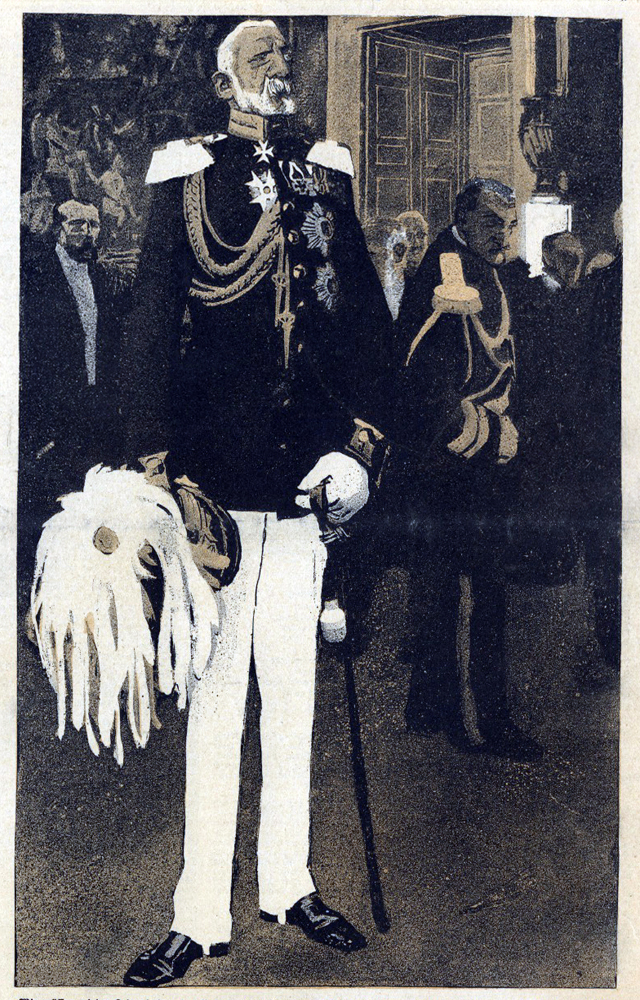
Eduard Thony (1866-1950) was a German illustrator, designer and painter who is primarily known for his contributions to Simplicissimus Magazine. He worked for Simplicissimus during it’s entire run and did almost 4,000 drawings for the publication.
His illustrations of army officers and cavalry horses were popular among a readership that largely consisted of military men, a group that either did not see or mind his caricatured depiction of their world. Other subjects included: Beer halls, street walkers, night clubs, restaurants and more. Thony didn’t write his own captions for his drawings; they were added by editors after he created each image.
I think his work for the magazine can be divided into three periods: Early, Middle and Late. In his early period Thony did drawings that I think have a Victorian influence to them. I see it in the clothes that he drew along with a line that is more refined than his later work. This period isn’t my favorite, but it’s still quite good.




In his middle period, which lasted about 20 years, his line is a little rough and the Victorian look that I mentioned earlier is no longer there. My guess is that influence is gone because the 1800’s was over and he had moved into the next century. This period is where he did some of my favorite work.












When I think of Eduard Thony’s art two things come to mind: big bold shapes and the textures in his ink drawings. More specifically I think of ink splatter, a technique where an artist uses a brush (or toothbrush) to flick ink onto a page. This approach creates a series of random dots that add variety to a drawing.
In the drawing below you can see the the splatter technique on the ground and in the soldier’s clothing.
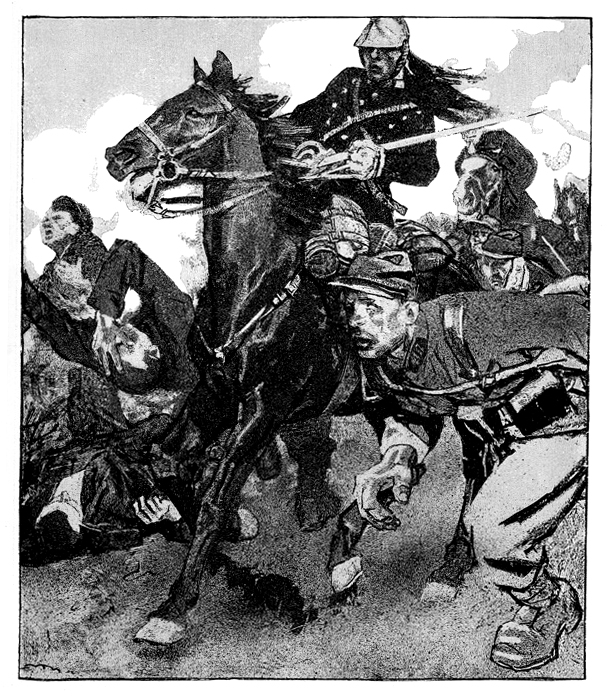
I used to think that he did most of his textures using this technique, but now I know that Thony employed a variety of tools to achieve the look that he wanted. Sometimes he shaded a section with pencil marks on a rough surface or in another part he did a rubbing over a pattern. I’ve even seen a drawing that looks like he pasted a pre-existing shape on to an image. Another tool he used is white paint, not only for corrections, but as a way to create part of the drawing.
Take a look at the drawing below. You can see this approach in the metals on the man’s jacket and the watch near his belly. The shapes of the dog were also created using white paint.
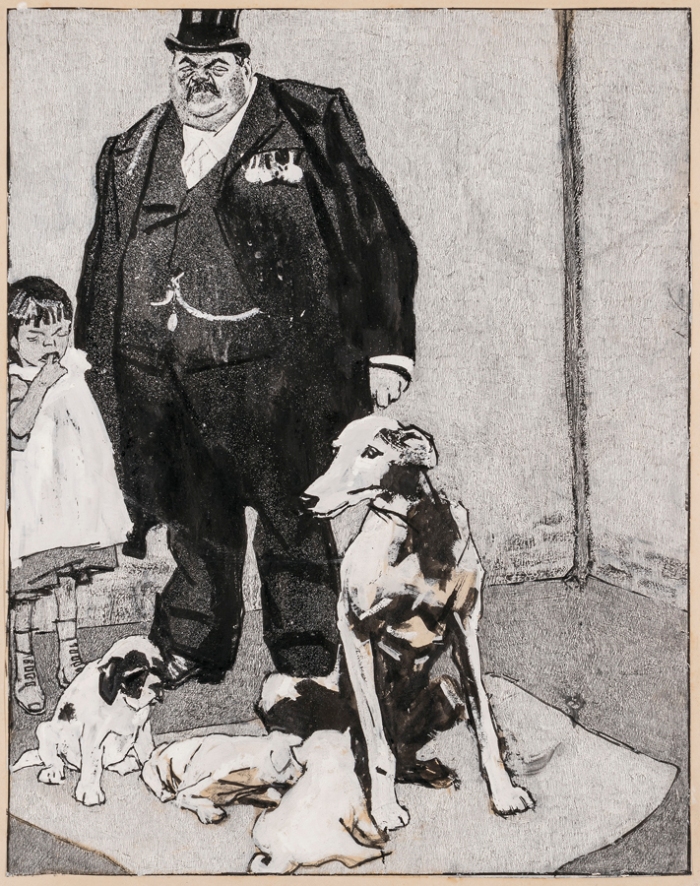
In this next illustration you can see an example of his “rubbing” texture in the clothing. Also take note of the man’s hat; it’s a pattern that Thony pasted on to the drawing.

As you can see his originals are fairly messy, which gives them a sense of freedom. Nothing is over worked and the drawings have life to them. My guess is Thony felt that the printed page is the final so anything that it took to get there was what he did.
Here are three images that show his working drawings and then the printed page.






I’ve mentioned that he also worked with big bold shapes. You can see it in some of my previous samples, but take a look at this one:
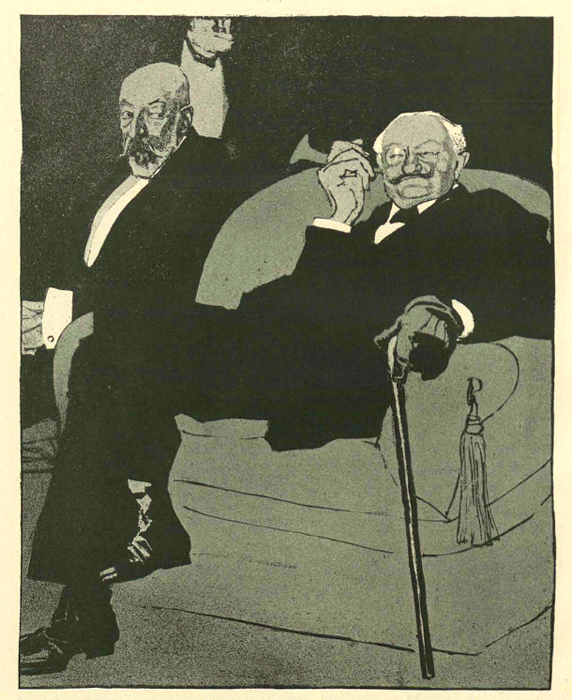
The two men are basically one shape that blends into the background. It’s a graphic look that doesn’t feel flat due to his drawing of the chair, the angle of the figures and the slight texture in the background.
His compositions go hand-in-hand with his use of shape. He often drew standing figures or someone on a horse, but they never felt clichéd. For instance, lets look at this image:

We see the back view of a figure that is mostly drawn as one single shape. He leads our eye to the top of the page and his pose almost reminds me of a twisted tree. At the top there are details of three men behind a table along with two fancy chairs. It’s a mixture of the graphic (the big shape) with the organic (the faces and hands). The front of the table is divided using color, with no line. Thony’s unique decision-making is one reason why I think he stands out not among the artists of Simplicissimus.
The shapes, textures, and color make for exciting drawings. Keep in mind that he did all this without the help of a computer. I know he colored his drawings using a printmaking technique, but I’m not even 100% sure how he did it! My guess is that he worked closely with the printer of the magazine.
I’d be remiss if I didn’t mention that Thony didn’t always work with this bold ink drawing technique. There are times when he’d create an illustration completely in pencil.
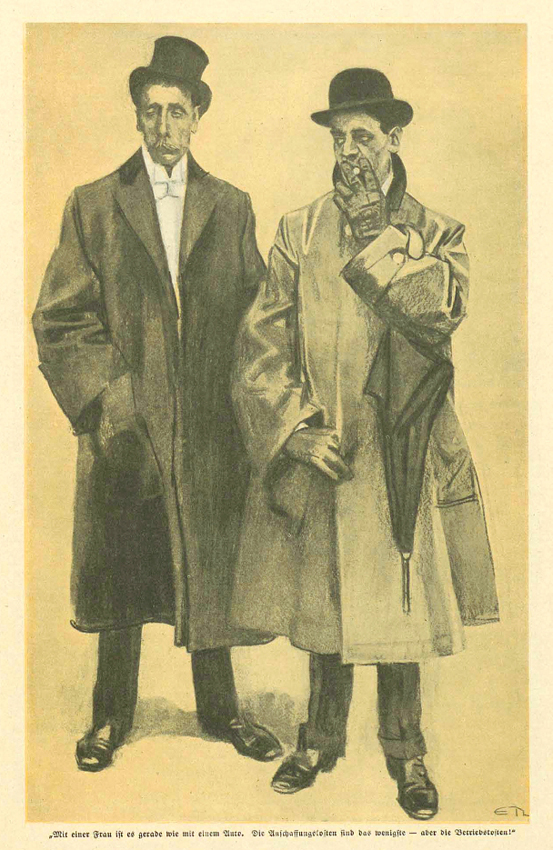
Or he’d do a piece that is a one color painting.
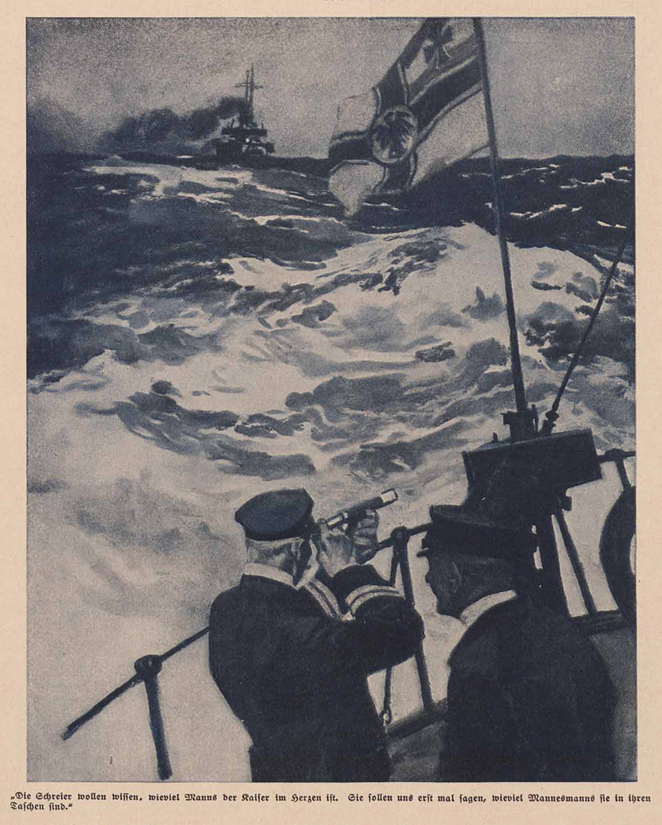
He wasn’t afraid to switch it up from time to time, even though the ink work is what he’s mostly known for.
In his late period Thony used a thin line and his shapes were less bold than in his previous work. It’s a departure from what he had been doing, but you can still see his signature drawing style throughout.









Eduard Thony worked for Simplicissimus Magazine until its end in 1944. When I was first introduced to his artwork, many years ago, I immediately connected to it. The reason is that it’s printmaking (which I’ve always liked) and the details that I mentioned above. As I’ve said in a past column I’ve found copies of the physical magazine and there’s nothing quite like the printed page, but for an article on the internet jpegs will have to do. I think he’s an artist the deserves greater recognition and I hope that you enjoyed the samples that I shared today.







Oooh I love seeing this vintage work! thanks for sharing!
Really fantastic article. I had never heard of Thony but I absolutely love what I’m seeing. I can’t believe how fresh his late period work is. Love these articles. Keep it up!